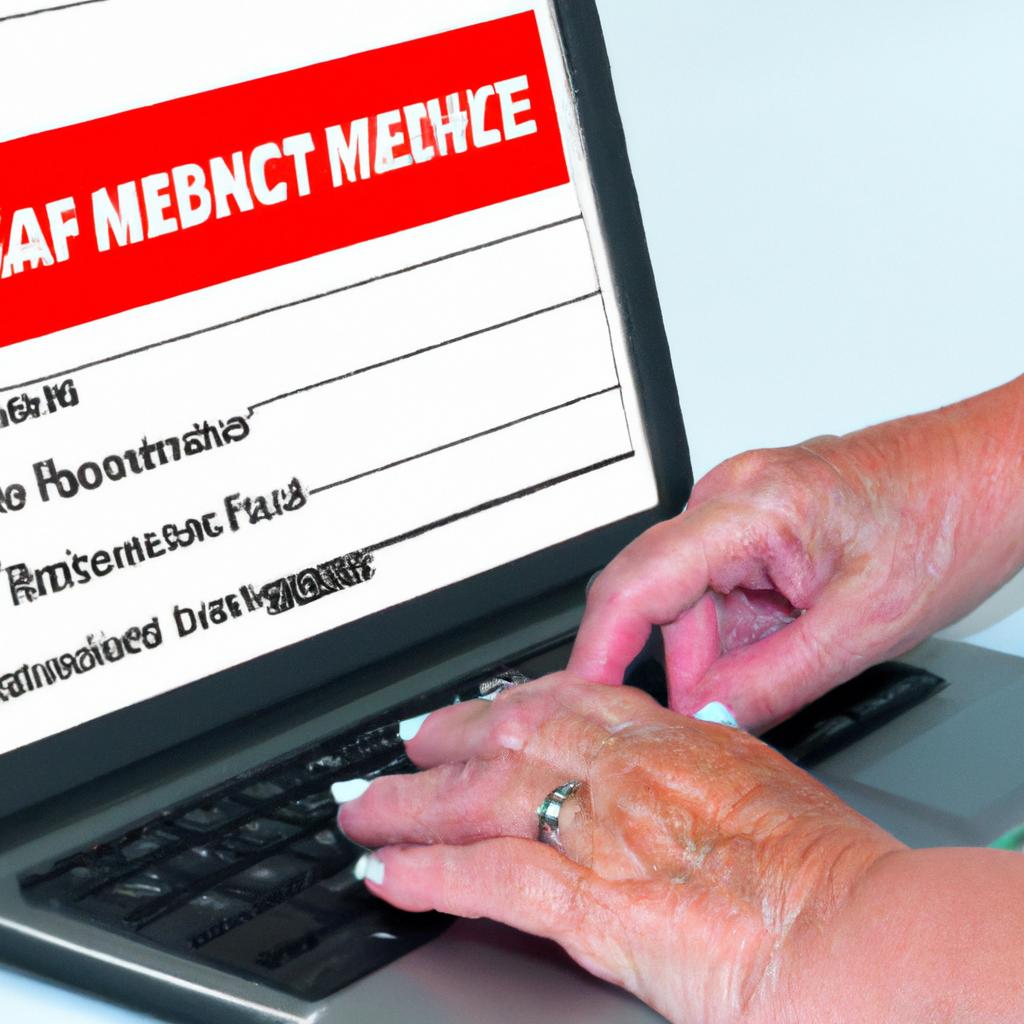In today’s ever-evolving healthcare landscape, ensuring seamless operations and efficient patient care is paramount for providers. One crucial aspect that cannot be overlooked is verifying Medicare eligibility and benefits. As a provider, understanding the importance of this process and staying up-to-date with the latest guidelines is vital to avoid claim denials, payment delays, and potential legal issues. So, why is it essential to verify medicare eligibility and benefits for providers? Let’s delve into the intricacies and shed light on this crucial topic.
At its core, verifying Medicare eligibility and benefits is the cornerstone of a successful healthcare practice. By confirming a patient’s eligibility, providers ensure that the services they render will be covered by Medicare. This step not only saves time and resources but also prevents claim denials, which can be detrimental to a provider’s bottom line. Moreover, verifying benefits allows providers to accurately determine the level of coverage for specific services, ensuring that patients are not burdened with unexpected out-of-pocket expenses.
Now, you may be wondering, how does this verification process actually work? Well, this article is here to guide you through the various methods and best practices. By the end, you’ll be equipped with the knowledge to streamline your operations, enhance patient satisfaction, and avoid unnecessary financial setbacks.
So, let’s embark on this journey together to unlock the secrets of verifying Medicare eligibility and benefits for providers. In the following sections, we’ll explore the different types of benefits provided by Medicare, understand why providers must prioritize this process, and learn valuable tips and techniques for efficient verification. By the end, you’ll be well on your way to ensuring a seamless healthcare experience for both you and your patients.
Stay tuned for the next section, where we’ll delve into the nitty-gritty of understanding Medicare eligibility and benefits. Remember, the success of your practice lies in your ability to adapt and navigate the intricacies of the healthcare system. So, let’s dive in and unlock the potential of verifying Medicare eligibility and benefits for providers!
Stay ahead of the curve, ensure optimal patient care, and explore the world of verifying Medicare eligibility and benefits for providers.
Next Section: Understanding Medicare Eligibility and Benefits
Understanding Medicare Eligibility and Benefits

Explanation of Medicare and its Various Parts
Before delving into the intricacies of verifying Medicare eligibility and benefits, it’s crucial to have a solid understanding of what Medicare is and how it functions. Medicare is a federal health insurance program primarily designed for individuals aged 65 and older, but it also covers certain younger individuals with disabilities and those with end-stage renal disease.
Medicare is comprised of different parts, each serving a specific purpose. Let’s take a closer look at these components:
-
Medicare Part A (Hospital Insurance): This part covers inpatient hospital stays, skilled nursing facility care, hospice care, and some home health services. Most individuals do not have to pay a premium for Part A if they or their spouse have paid Medicare taxes while working.
-
Medicare Part B (Medical Insurance): Part B covers doctor visits, outpatient care, medical supplies, and preventive services. It requires a monthly premium, and the amount is based on income and other factors.
-
Medicare Part C (Medicare Advantage): Offered by private insurance companies approved by Medicare, Part C combines the benefits of Part A and Part B, and often includes prescription drug coverage (Part D) as well. These plans provide additional coverage options beyond Original Medicare.
-
Medicare Part D (Prescription Drug Coverage): Part D helps cover the cost of prescription medications. It is available through private insurance companies that contract with Medicare.
Eligibility Criteria for Medicare
To be eligible for Medicare, individuals must meet specific criteria:
- Individuals aged 65 and older automatically qualify for Medicare.
- Younger individuals with certain disabilities and those with end-stage renal disease may also be eligible.
It’s important to note that Medicare eligibility is not solely based on income or financial need. It is a federally funded program available to eligible individuals regardless of their financial status.
Different Types of Benefits Provided by Medicare
Medicare offers various benefits to eligible individuals, ensuring comprehensive coverage for healthcare services. Here are some key benefits:
-
Inpatient Hospital Care: Medicare Part A covers hospital stays, including necessary treatments and procedures during the stay.
-
Outpatient Care: Medicare Part B covers a wide range of outpatient services, such as doctor visits, preventive screenings, lab tests, and durable medical equipment.
-
Prescription Drug Coverage: Medicare Part D provides coverage for a wide range of prescription medications, helping individuals manage their healthcare costs.
-
Specialized Care: Medicare may cover specialized services like home health care, skilled nursing facility care, hospice care, and rehabilitation services.
Understanding these different types of benefits is crucial for providers to accurately verify the eligibility and coverage of their patients. By gaining a comprehensive understanding of Medicare and its various parts, providers can navigate the system effectively and ensure optimal care for their patients.
In the next section, we will explore why providers must prioritize verifying Medicare eligibility and benefits, uncovering the potential risks and benefits of this crucial process.
Next Section: Why Providers Must Verify Medicare Eligibility and Benefits
Why Providers Must Verify Medicare Eligibility and Benefits

In the complex world of healthcare, providers face numerous challenges, from managing patient care to navigating billing processes. One critical aspect that should never be overlooked is the verification of Medicare eligibility and benefits. Let’s dive into why this step is of utmost importance, and how it directly impacts providers and their patients.
A. Avoiding Claim Denials and Payment Delays
As a provider, your goal is to provide quality care and ensure timely reimbursement for the services rendered. However, without verifying Medicare eligibility and benefits, you run the risk of claim denials and payment delays. Imagine investing valuable time, effort, and resources into treating a patient, only to have your claim denied due to the patient’s ineligibility or insufficient coverage. This not only leads to financial setbacks but can also disrupt the smooth functioning of your practice. By verifying Medicare eligibility and benefits upfront, you can avoid such complications, ensuring that the services you provide will be covered and reimbursed in a timely manner.
B. Ensuring Accurate Billing and Reimbursement
Accurate billing is the backbone of any successful healthcare practice. Without proper verification of Medicare eligibility and benefits, you may inadvertently submit incorrect claims, leading to potential financial losses. By verifying eligibility, you can determine the patient’s coverage and the specific services that are reimbursable under Medicare. This knowledge allows you to generate accurate bills and submit claims that align with the guidelines, reducing the chances of claim rejections or audits. This not only streamlines your revenue cycle but also ensures compliance with Medicare regulations.
C. Enhancing Patient Satisfaction and Trust
In the healthcare industry, patient satisfaction and trust are paramount. By verifying Medicare eligibility and benefits, you demonstrate your commitment to transparency and patient-centered care. Patients want assurance that their healthcare expenses will be covered and that they won’t face unexpected financial burdens. By proactively verifying eligibility, you can inform patients about their coverage, potential out-of-pocket costs, and alternative payment options if necessary. This level of transparency builds trust and fosters a positive patient-provider relationship, ultimately enhancing patient satisfaction and loyalty.
As providers, it is our responsibility to prioritize the verification of Medicare eligibility and benefits. By doing so, we can avoid claim denials, ensure accurate billing and reimbursement, and foster patient satisfaction and trust. In the next section, we will explore the various methods available for efficiently verifying Medicare eligibility and benefits. So, stay tuned!
Unveil the power of verifying Medicare eligibility and benefits and take your practice to new heights.
Next Section: Methods to Verify Medicare Eligibility and Benefits
Methods to Verify Medicare Eligibility and Benefits
As a provider, it’s crucial to have efficient methods in place to verify Medicare eligibility and benefits for your patients. By utilizing the right tools and resources, you can streamline the verification process and ensure accurate billing and reimbursement. Let’s explore some effective methods that can help you navigate this important aspect of healthcare administration.
A. Utilizing the Medicare Administrative Contractor (MAC) Portals
One of the most reliable and convenient ways to verify Medicare eligibility and benefits is by utilizing the Medicare Administrative Contractor (MAC) portals. These online platforms provide a wealth of information, allowing you to access patient-specific details, coverage information, and even submit claims electronically. By logging into the appropriate MAC portal, you can quickly verify a patient’s eligibility, view their benefits, and ensure that the services you provide align with Medicare guidelines.
B. Contacting the Medicare Provider Enrollment, Chain, and Ownership System (PECOS)
Another method to verify Medicare eligibility and benefits is by contacting the Medicare Provider Enrollment, Chain, and Ownership System (PECOS). PECOS is an online database that stores information about Medicare-enrolled providers, suppliers, and organizations. By accessing PECOS, you can verify a provider’s enrollment status, ensuring that they are eligible to bill Medicare for services rendered. This is particularly important when collaborating with other healthcare professionals or organizations to ensure seamless coordination of care.
C. Using the Interactive Voice Response (IVR) System
For quick and automated verification, providers can leverage the Interactive Voice Response (IVR) system provided by Medicare. By calling the designated phone number, you can navigate through the IVR system to verify a patient’s eligibility and benefits. This method is particularly useful when you need instant access to information and prefer a phone-based approach.
D. Leveraging Electronic Data Interchange (EDI) Transactions
Electronic Data Interchange (EDI) transactions play a significant role in streamlining the verification process. By implementing EDI systems, you can electronically exchange information with Medicare, ensuring accurate and efficient verification of eligibility and benefits. EDI transactions enable seamless integration between your practice management software and Medicare systems, reducing manual errors and enhancing overall efficiency.
By utilizing these methods, you can ensure a streamlined process of verifying Medicare eligibility and benefits for your patients. Each approach offers its unique advantages, so it’s crucial to find the right combination that aligns with your practice’s needs and preferences. Stay tuned for the next section, where we’ll delve into valuable tips for efficiently verifying Medicare eligibility and benefits.
Next Section: Tips for Efficiently Verifying Medicare Eligibility and Benefits
Tips for Efficiently Verifying Medicare Eligibility and Benefits
When it comes to verifying Medicare eligibility and benefits for providers, efficiency is key. By implementing certain strategies and best practices, you can streamline the verification process and ensure accurate results. Let’s explore some valuable tips that will help you efficiently navigate this crucial task.
A. Ensuring accurate patient information
The first step in verifying Medicare eligibility and benefits is to ensure that you have accurate patient information. This includes verifying their full name, date of birth, Social Security number, and Medicare ID number. It’s crucial to double-check this information to avoid any potential errors that may lead to claim denials or delayed payments. By maintaining accurate patient records, you can confidently proceed with the verification process and provide the necessary care.
B. Regularly updating provider enrollment information
Providers must stay vigilant and regularly update their enrollment information with Medicare. This includes verifying and updating their National Provider Identifier (NPI) number, contact details, and any changes in their practice or services. Keeping this information up-to-date is crucial for accurate verification and seamless communication with Medicare. By proactively managing your provider enrollment information, you can ensure a smooth and efficient verification process.
C. Utilizing automated verification systems or software
In this digital age, leveraging technology can greatly enhance the efficiency of Medicare eligibility and benefits verification. Consider utilizing automated verification systems or software that can seamlessly integrate with your practice management system. These tools can quickly access Medicare databases, perform real-time verification, and provide instant results. By automating the process, you can save time, minimize errors, and improve overall workflow efficiency.
D. Implementing staff training and education
Lastly, it’s crucial to invest in staff training and education regarding Medicare eligibility and benefits verification. Ensure that your administrative staff is well-versed in the process, understands the importance of accurate verification, and is equipped with the necessary knowledge to handle any challenges that may arise. Regular training sessions, updates on policy changes, and clear communication channels will empower your staff to efficiently navigate the verification process, leading to improved patient care and financial stability.
By following these tips, you can streamline the process of verifying Medicare eligibility and benefits for your practice. Remember, efficiency is key in today’s fast-paced healthcare industry. Stay organized, leverage technology, and empower your staff to ensure accurate and efficient verification, benefiting both your practice and your patients.
Continue reading to the next section, where we’ll explore the conclusion and recap the importance of verifying Medicare eligibility and benefits for providers.
Next Section: Conclusion
Tips for Efficiently Verifying Medicare Eligibility and Benefits
Now that you understand the significance of verifying Medicare eligibility and benefits for providers, let’s explore some practical tips to streamline this process. By implementing these strategies, you can ensure accurate billing, improve reimbursement rates, and enhance the overall efficiency of your practice. So, without further ado, here are some valuable tips to help you efficiently verify Medicare eligibility and benefits:
1. Ensuring accurate patient information
To avoid potential errors and delays, it is crucial to gather and maintain accurate patient information. Double-check that patient details, such as name, date of birth, and Medicare beneficiary number, are correctly recorded. Regularly updating and verifying this information will help you deliver accurate and timely services while minimizing claim rejections.
2. Regularly updating provider enrollment information
Keeping your provider enrollment information up to date is essential to ensure seamless verification of Medicare eligibility and benefits. Any changes in your practice, such as address, contact details, or service offerings, should be promptly reported to the relevant authorities. This proactive approach will prevent any discrepancies or delays in the verification process.
3. Utilizing automated verification systems or software
In this digital age, leveraging technology can significantly streamline the verification process. Consider implementing automated verification systems or software that integrate with Medicare’s systems. These tools can quickly access and verify patient eligibility and benefits, saving valuable time and reducing the chances of human error.
4. Implementing staff training and education
Ensure that your staff members are well-trained in verifying Medicare eligibility and benefits. Provide comprehensive training on the latest guidelines, procedures, and tools to ensure consistent and accurate verification. Regular updates and refresher courses will keep your team knowledgeable, confident, and capable of handling any changes or challenges that may arise.
By following these tips, you can optimize the process of verifying Medicare eligibility and benefits for providers. Remember, attention to detail and staying up-to-date with the latest regulations are key to ensuring a smooth healthcare experience for both you and your patients.
Now that we’ve explored the essential tips for efficient verification, let’s move on to the conclusion. In the final section, we’ll recap the importance of verifying Medicare eligibility and benefits and emphasize the significance of prioritizing this process for seamless operations and improved patient care.
Next Section: Conclusion


